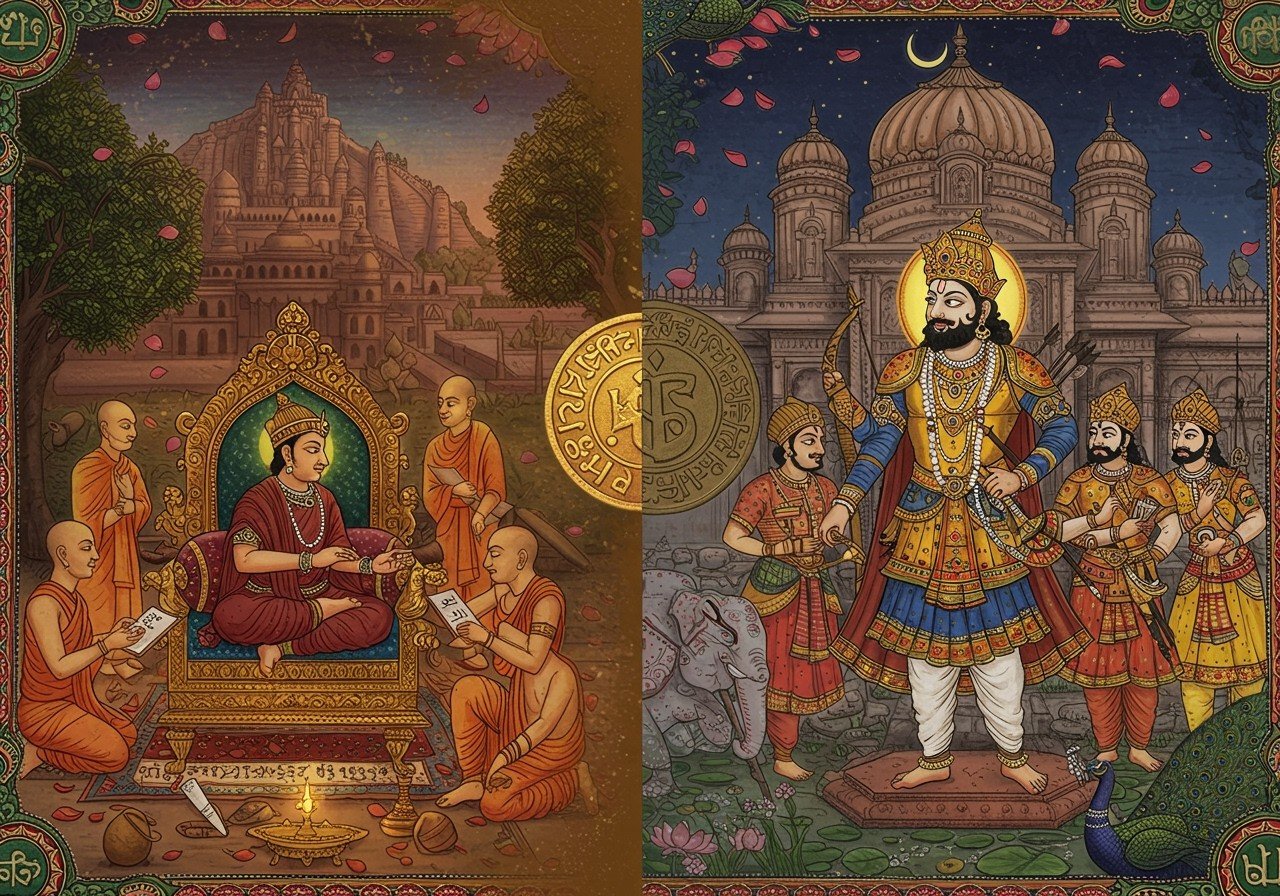
The Pala and Sena Dynasties, two significant powers in Bengal’s history (750-1200 AD), shaped the region’s cultural, religious, and political landscape. This analysis explores their origins, governance, cultural impact, and enduring legacies, highlighting their similarities, differences, and contributions to Bengal’s heritage.
Origins and Rise to Power
The Pala Dynasty (750-1150 AD)
Founded by Gopala around 750 AD, the Pala Dynasty reigned for nearly four centuries. Gopala, elected by local chieftains, brought stability to a fragmented Bengal. Key figures like Dharmapala and Devapala expanded the empire, establishing its dominance in Bengal and eastern Bihar. They faced and overcame threats from neighboring regions through strategic alliances and military prowess.
The Sena Dynasty (1097-1230 AD)
Emerging after the Pala decline, the Sena Dynasty was established by Hemanta Sena in the late 11th century (around 1097 AD). Vijayasena, Ballala Sena, and Lakshmanasena further consolidated Sena power. Ballala Sena’s conquest of Gaur from the Palas and the establishment of Nadia as the capital marked a significant shift in power. The Sena rulers navigated a complex political landscape through military strength and astute political maneuvering.
Governance and Administration
The Pala Dynasty
The Palas implemented an efficient administrative system rooted in a feudal structure with a strong central authority. This system fostered stability and prosperity. Local chieftains played a vital role in regional administration, ensuring effective governance across the vast empire.
The Sena Dynasty
The Senas adopted a centralized governance model characterized by a rigid caste system. Their focus on land revenue systems and military strategies shaped Bengal’s socio-political structure. This centralized approach, while effective in consolidating power, also impacted social hierarchies within the region.
Religious and Cultural Influences
The Pala Dynasty
Known for their staunch support of Buddhism, the Palas established renowned monasteries and universities like Vikramashila and Nalanda. These centers of learning became beacons of Buddhist scholarship and attracted students from across Asia. The Pala reign saw a flourishing of Buddhist art, architecture, and philosophy.
The Sena Dynasty
The Senas ushered in a resurgence of Hinduism in Bengal. Their patronage of Hindu temples and Sanskrit literature marked a shift in religious focus. This revival significantly influenced religious practices, social norms, and artistic expression, contributing to the region’s diverse cultural tapestry.
Economic and Military Aspects
The Pala Dynasty
The Pala economy thrived on agriculture, trade, and commerce. Extensive trade networks, reaching as far as Southeast Asia, brought prosperity and integrated Bengal into broader regional economies. Their military prowess was instrumental in expanding and defending their territories.
The Sena Dynasty
The Senas largely continued the Pala economic policies, focusing on local industries and crafts. Their trade routes facilitated economic activity and ensured Bengal’s continued prosperity. They maintained a strong military to defend against external threats, particularly from emerging Muslim powers.
Legacies and Conclusion
The Pala Dynasty
The Pala legacy is deeply intertwined with the flourishing of Buddhism and educational institutions in Bengal. Their patronage of art, architecture, and literature left an enduring mark on the region’s intellectual and cultural heritage. The ruins of Vikramashila stand as a testament to their commitment to learning.
The Sena Dynasty
The Sena Dynasty’s revival of Hinduism significantly influenced religious practices and social structures. Their contributions to art, architecture, and literature are equally significant. Historical sites and texts reflect their lasting impact on Bengal’s cultural identity.
Both dynasties played pivotal roles in shaping Bengal’s history. Their distinct contributions, while sometimes contrasting, enriched the region’s cultural tapestry and continue to resonate in its heritage. Understanding their similarities and differences provides valuable insights into Bengal’s complex and fascinating past.
Traditional Ritual Items for Bengali Cultural Heritage at Poojn.in
As we delve into Bengal’s rich heritage shaped by the Pala and Sena dynasties, Poojn.in offers authentic ritual items that help connect with these ancient traditions. The Chand Mala (₹ varies), traditionally used in deity adornment, reflects the artistic sensibilities of the era. The Cotton Thread (₹ varies), essential in various rituals, represents the continuity of tradition.
Poojn.in makes these authentic items accessible, ensuring the preservation of traditional craftsmanship and allowing individuals to engage with their cultural heritage in a meaningful way. Explore our collection of Sindoor (₹ varies) and other puja essentials to enhance your spiritual practices.


